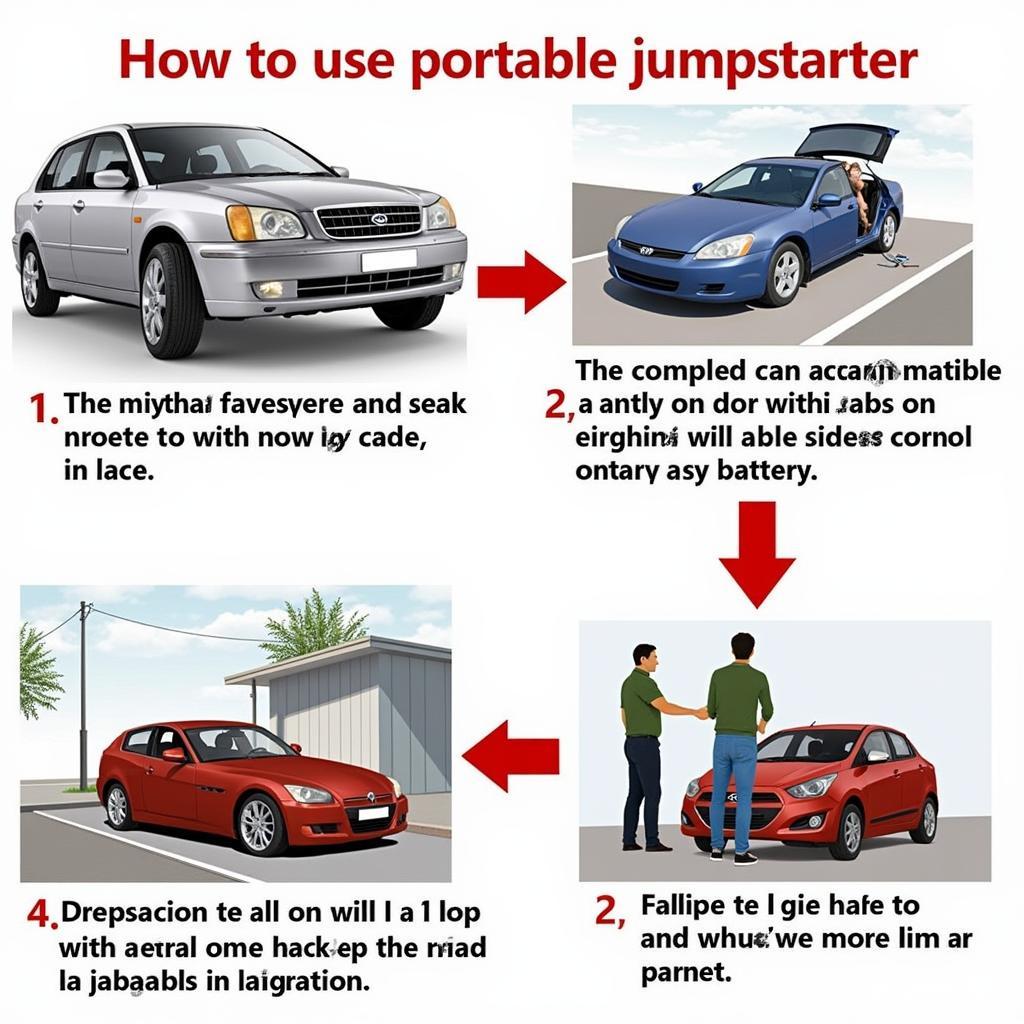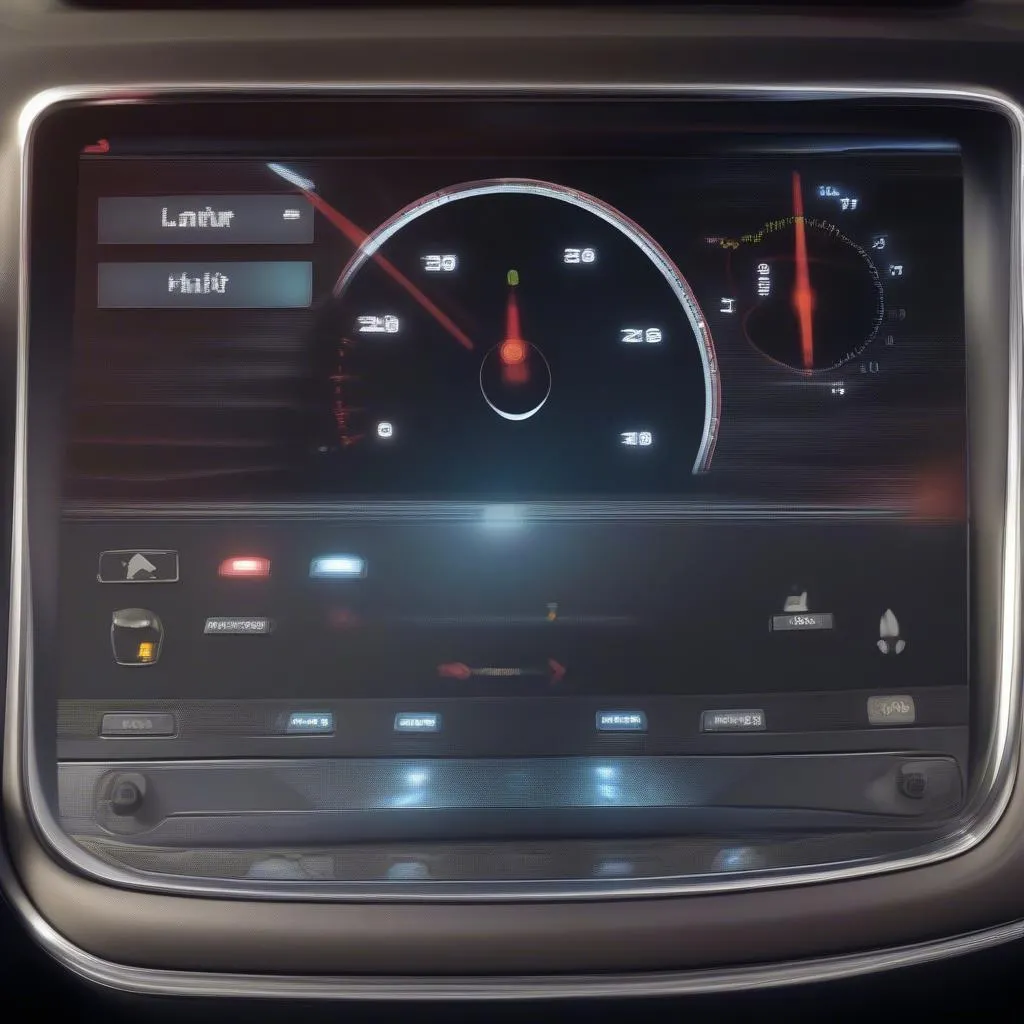A dead car battery can be a frustrating experience, especially when you’re in a hurry. Knowing how to start a car with a dead battery is an essential skill for any driver. This article provides a comprehensive guide to troubleshooting a dead battery, jump-starting your car, and implementing preventative measures.
Understanding Why Your Car Battery Died
Before attempting to start your car with a dead battery, it’s crucial to understand why your battery died in the first place. Common causes include leaving lights on, extreme temperatures, old age, and a faulty alternator. Identifying the root cause can help you avoid similar situations in the future. If your car won’t start and you suspect the battery, car won t start but battery not dead offers further diagnostic tips.
Common Signs of a Dead Car Battery
- Dim headlights or interior lights
- Clicking sound when turning the key
- Slow engine crank
- Electrical malfunctions
How to Jump Start a Car with a Dead Battery
Jump-starting a car is a common solution for a dead battery. This involves using another car’s battery to provide the necessary power to start your engine.
- Gather your supplies: Jumper cables and another vehicle with a working battery.
- Position the vehicles: Park the working vehicle close to yours, ensuring the batteries are accessible.
- Connect the positive (red) cable: Attach one end to the positive terminal of the dead battery and the other end to the positive terminal of the good battery.
- Connect the negative (black) cable: Attach one end to the negative terminal of the good battery. Attach the other end to a metal ground on your car, away from the battery.
- Start the working vehicle: Let it run for a few minutes to charge the dead battery.
- Start your vehicle: If it doesn’t start immediately, try again after a few more minutes.
- Disconnect the cables: Remove the cables in reverse order, starting with the negative cable.
 Connecting Jumper Cables to Car Battery
Connecting Jumper Cables to Car Battery
If you’re facing a situation where your battery isn’t dead but the car won’t start, other issues may be at play.
Alternatives to Jump Starting
While jump-starting is often the quickest solution, there are alternatives:
- Portable jump starter: These compact devices can provide enough power to start your car without needing another vehicle.
- Battery charger: A battery charger can fully recharge your dead battery, although this takes longer than jump-starting.
- Roadside assistance: Contacting a roadside assistance service can provide professional help if you’re unsure how to proceed.
“A portable jump starter is a worthwhile investment, especially for drivers who frequently travel long distances or live in areas with harsh weather conditions,” says automotive expert John Davis.
What if jump starting doesn’t work?
If jump starting doesn’t work, the problem may not be your battery. It could be a faulty starter, alternator, or another electrical component. In such cases, it’s best to consult a qualified mechanic. For further troubleshooting, resources like car battery not dead but car won t start can provide valuable insights.
 Using a Portable Jump Starter
Using a Portable Jump Starter
Preventing a Dead Car Battery
Preventing a dead battery is easier than dealing with the consequences. Here are some preventative measures:
- Turn off lights and accessories: Always double-check that all lights and accessories are off when you park your car.
- Regular battery testing: Have your battery tested regularly, especially during extreme temperatures.
- Clean battery terminals: Corrosion can hinder the battery’s performance. Clean the terminals with a wire brush and baking soda solution.
“Regular battery maintenance can significantly extend its lifespan and prevent unexpected breakdowns,” advises Sarah Miller, a certified automotive technician. If you’ve attempted a jump start and it’s unsuccessful, you may want to consider if your car battery is dead and the jump start is not working.
Conclusion
Starting a car with a dead battery can be a straightforward process if you follow the correct procedures. Understanding the causes of a dead battery and implementing preventative measures can help you avoid this frustrating situation. Whether it’s jump-starting, using a portable jump starter, or simply maintaining your battery, being prepared can keep you on the road. If you suspect the issue isn’t the battery, consider resources like battery not dead but car wont start for additional troubleshooting guidance.
FAQ
- How long does a car battery last? Typically, a car battery lasts between 3 and 5 years.
- Can I jump-start a car in the rain? Yes, but ensure all connections are dry and avoid touching any metal parts.
- Is it safe to jump-start a car? Yes, it’s generally safe if you follow the correct procedure.
- How can I tell if my alternator is bad? Signs of a bad alternator include dim headlights, flickering lights, and strange noises.
- How long should I let the car run after jump-starting? At least 30 minutes to allow the alternator to recharge the battery.
- What should I do if my car won’t start after jump-starting? Contact a qualified mechanic to diagnose the problem.
- How much does a new car battery cost? The price varies depending on the type and brand, but typically ranges from $50 to $200.

